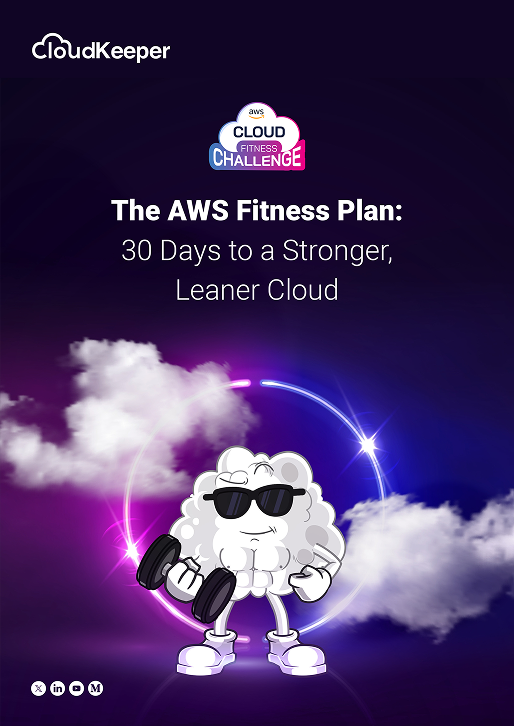Right-sizing is a process in cloud infrastructure management, which involves optimizing the resources allocated to a system, service, or application to ensure that it is using just the right amount of resources it needs, without wasting any resources or being under-provisioned.
In the context of AWS EC2 instances, right-sizing refers to optimizing the amount of resources allocated to instances, such as CPU, memory, and storage, to ensure that they provide cloud cost savings, while meeting the requirements of the workload running on them. This can involve scaling up or down the instance size, selecting the right instance family, leveraging autoscaling, and optimizing storage options.
By right-sizing your infrastructure, you can reduce your costs and improve your system's performance and reliability. As a DevOps team, one of your responsibilities is to implement cloud infrastructure management while improving performance and optimizing costs. One way to do this is by right-sizing your EC2 instances.
In this blog, we'll explore some strategies for doing this effectively.
Analyze Your Workloads: The first step in right-sizing your EC2 instances is to analyze your workloads. Identify which instances are over-provisioned or underutilized, and determine the optimal resource requirements for each workload. You can use AWS CloudWatch to monitor your instances and collect performance data to help with this analysis.
Use Instance Families: AWS offers different instance families, each optimized for specific use cases. For example, compute-optimized instances are designed for CPU-intensive workloads, while memory-optimized instances are optimized for memory-intensive workloads. By choosing the right instance family for your workloads, you can avoid overprovisioning and ensure enough cloud cost savings.
Autoscaling: Autoscaling allows you to automatically adjust the number of instances based on changes in demand. Using autoscaling, you can ensure that you always have the right number of instances to handle your workloads without overprovisioning.
Spot Instances: Spot instances are spare EC2 instances that AWS makes available at a lower price than on-demand instances. By using spot instances, you can save money on your EC2 costs. However, spot instances are not always available, and their availability can fluctuate based on demand. This must be taken into account in cloud infrastructure management.
Reserved Instances: EC2 Reserved instances are a way to save money on your EC2 costs by committing to a certain usage level over a specified period. By reserving capacity ahead of time, you can save up to 75% compared to on-demand pricing.
Elastic Block Store (EBS) Optimized Instances: EBS-optimized instances are optimized for use with Amazon EBS, which provides persistent block storage for your EC2 instances. By using EBS-optimized instances, you can improve the performance of your EBS volumes.
Right-sizing your EC2 instances can help you optimize the performance and cost of your AWS infrastructure. By analyzing your workloads, using the appropriate instance families, using autoscaling, leveraging spot and reserved instances, and using EBS-optimized instances, you can ensure that your instances are using the appropriate amount of resources and help you deliver significant cloud cost savings.
A Smarter and Easier Way to Streamline your EC2 Architecture
The best practices mentioned above could help you improve your right sizing strategy and bring in substantial cloud cost savings. However, when businesses start scaling up, this cloud infrastructure management activity will require a lot of effort and manual dependency. This involves constant monitoring of the workloads, relying on inaccurate usage predictions, using multiple tools to analyze and provision the required resources, staying regularly updated on the pricing and commitment models of various service plans and more. This takes up a lot of time and cost, that could be used to enhance their core business functions.
This is where RI/Savings Plan management tools come into the picture. These tools will help streamline the right sizing of EC2 resources and make sure that the organization achieves the maximum potential cost savings while provisioning EC2 volumes. CloudKeeper Auto, being a prime example, helps businesses ensure there are enough resources to manage their usage requirements, while also providing them maximum cloud cost savings.
CloudKeeper Auto, a completely automated RI Management platform, helps businesses buy EC2 resources on-demand, at 3-year Reserved Instance pricing, the highest discount tier for reservations. Notably, the solution does not require any type of volume or term commitment from the user for the EC2 reserved instances.
The proprietary AI engine automatically buys/sells RIs on behalf of the organization, with just a simple IAM access to their AWS account. CloudKeeper Auto uses a Results Based Pricing strategy, where the solution doesn’t charge anything extra and only takes up a small percentage of the EC2 Savings as the platform fee.
CloudKeeper Auto completely takes away all manual dependencies on RI management and delivers cloud cost savings with -
- Automated buying/selling of RIs on the secondary marketplace
- Guaranteed buyback of RI reservations made through the platform
- Risk-free coverage with no commitments and no billing transfer
As a conclusion, businesses must ensure to follow the best practices in right sizing the EC2 resources, which will help them optimize their cloud infrastructure management strategy and bring in cost savings. RI Management Platforms will be highly beneficial for these organizations, which can manage their EC2 infrastructure on their behalf and bring in cloud cost savings, while they focus on their core business functions.
Want to know more about how CloudKeeper Auto could help you make the most out of your EC2 Reservations?Talk to our experts today!
